Chimney Caps – Do I Need Them?
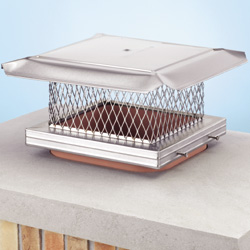 Chimney caps are one of the most important investments you can make for your chimney system. They serve multiple purposes and could keep you from experiencing the threat of unnecessary chimney damage. They will even help you to keep out those unwanted visitors that like to call your chimney their home.
Chimney caps are one of the most important investments you can make for your chimney system. They serve multiple purposes and could keep you from experiencing the threat of unnecessary chimney damage. They will even help you to keep out those unwanted visitors that like to call your chimney their home.
What Are Chimney Caps?
Many of the people we deal with do not know if they have chimney caps. As a matter of fact, most do not know what chimney caps are or the purpose they serve. To explain it simply, chimney caps are those “Bird House Looking” objects you see on the top of chimneys. I’m sure you could look out your window right now and see at least one or two around your neighborhood. Chimney caps have a base that either slides down into the chimney flue or attaches to the flue tile or top of the chimney. They generally have some type of screen or mesh as sides. Attached to the top of this mesh is a lid.
Chimney caps come in many different sizes, shapes, and styles. They can be constructed of galvanized steel, stainless steel, copper, and in some cases aluminum. With a quick look at the chimney caps on our website, you will find square, rectangular, and even round and wind directional caps. You’ll also see that the sizes can vary from very small to very large to fit the specific dimensions and needs of your chimney.
What Do Chimney Caps Do?
Chimney caps are multipurpose tools for your chimney system. There are many reasons that you should have them. Listed below are just a few.
-
Rain and Snow
- Entry of precipitation such as rain or snow into your chimney system can be extremely hazardous. As water mixes with the by-products of combustion, the acidic mixture can eat away at the glaze on your clay flue liner. If you have no tile, the brick and mortar your flue is constructed of can deteriorate and soften. In either case, the chances of structure fire increases. You may also see evidence of water damage on the walls of your home as the water soaks through these softened tile, brick, and mortar joints.
- Another reason for keeping water from entering your chimney is “Odor”. When water mixes with creosote, the odor that is created can be nauseating to many people. The smell can take over a room or house and can be unbearable.
- Finally, if you own a fireplace, water that enters the fireplace system can cause metal components such as the damper, damper frame, fireplace grate, and metal fireboxes to develop rust and corrosion. If this gets too bad, you could be into replacing your damper or even closing your fireplace down. I have seen many metal fireboxes and smoke chambers that rusted completely through causing them to be unsafe to use.
-
Animals and birds
- Your chimney is the perfect home for animals and birds. During the spring it is not uncommon to see birds entering and
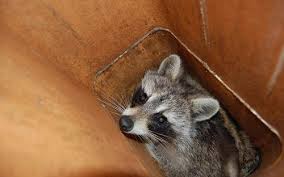 leaving your chimney top. The chimney swift will fly into your chimney and build it’s nest right on the sidewalls of your flue. Over the years I’ve encountered raccoons and squirrels in fireplaces. Once, I came across a duck that somehow made it’s way into a chimney and got stuck. It’s bad enough to have these animals enter your chimney, but the mess they leave can be extremely hazardous to the health of those who live in the home. In all instances, chimney caps would have saved the homeowners some major headaches.
leaving your chimney top. The chimney swift will fly into your chimney and build it’s nest right on the sidewalls of your flue. Over the years I’ve encountered raccoons and squirrels in fireplaces. Once, I came across a duck that somehow made it’s way into a chimney and got stuck. It’s bad enough to have these animals enter your chimney, but the mess they leave can be extremely hazardous to the health of those who live in the home. In all instances, chimney caps would have saved the homeowners some major headaches.
-
Wind Induced Down Drafts
- There is nothing worse than sitting around your stove or fireplace and suddenly having a puff of smoke come back at you. Wind induced down drafts can be a common occurrence if you have objects or structures nearby that are taller than your chimney. As bursts of wind come over these objects the downward gust that is created will enter your flue and force a burst of smoke backward. In most cases, a properly sized and installed wind directional cap will resolve this problem.
-
Roof Fires
- While the mesh of chimney caps is great for keeping animals out, it also acts as a spark arrestor. At times, sparks from your fire may travel up the flue and out into the open. This also happens if you were to experience a chimney fire. In this case a massive amount of sparks and burning debris may be sent up your flue. Without chimney caps with mesh, these sparks will end up on your roof. The chimney caps with mesh will act as a spark arrestor and keep most of these hazardous sparks off your roof.
As you can see, chimney caps can be the best investment you can make to protect your chimney and home. The only time I wouldn’t recommend a chimney cap with mesh is if the flue your capping vents a gas furnace. Since the flue gas is water vapors, using a cap with mesh will cause the mesh to freeze over with ice when the vapors hit it. This freezing could cause your flue to plug up and cause carbon monoxide to enter the home when the furnace fires. The good news is, there are caps available that allows you to remove the mesh just for these situations.
To get the chimney caps that are perfect for your situation, be sure to visit our online “Shop”.
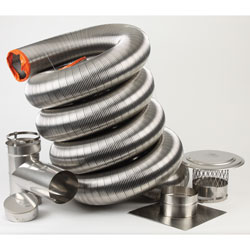
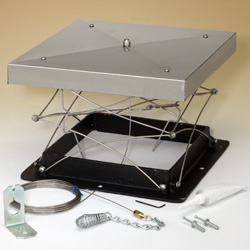
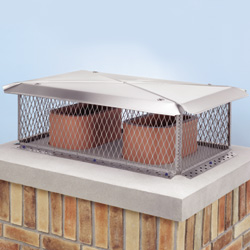
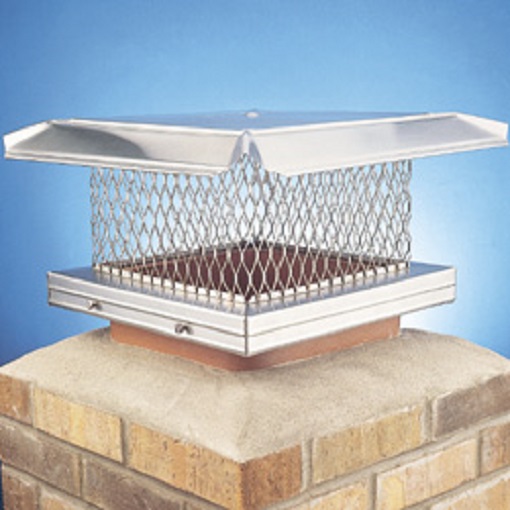
No comments yet.